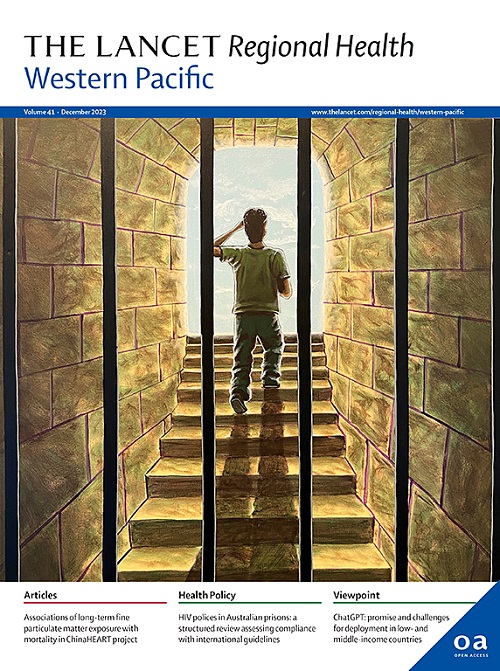Clinical and molecular characteristics, therapeutic strategy, and prognosis of non-small cell lung cancer patients harboring primary and acquired BRAF mutations
IF 7.6
1区 医学
Q1 HEALTH CARE SCIENCES & SERVICES
引用次数: 0
Abstract
Background
BRAF oncogene is a rare genetic alteration in NSCLC. Acquired BRAF mutations are an emerging resistance mechanism to EGFR TKIs. The differences in clinical and genetic characteristics, therapeutic strategies, and outcomes in NSCLC patients harboring primary and acquired BRAF mutations are still poorly understood.
Methods
From Oct 2017 to Dec 2023, 10, 211 lung cancer patients at Shanghai Ruijin Hospital were reviewed. 88 primary BRAF-mutated and 15 acquired BRAF-mutated NSCLC patients resistant to EGFR TKIs were included in the study.
Findings
Primary BRAF-mutated patients preferentially occurred in the elderly (median age: 67 versus 61, p=0.015), males (53.4% vs 26.7%, p=0.056), former/current smokers (36.5% vs 6.7%, p=0.033), non-adenocarcinoma (11.4% vs 0%, P=0.351) compared to acquired BRAF-mutated patient. There were significant differences between the primary BRAF/EGFR co-mutated group and the non-EGFR co-mutated group in terms of gender (males: 33.3% vs 62.3%, p=0.012), smoking history (22.2% vs 43.1%, p=0.063), and histological types (adenocarcinomas: 100% vs 83.6%, p=0.028). The clinical characteristics between primary and acquired BRAF/EGFR co-mutated patients were similar. The most frequently coexisting oncogenes of primary and acquired BRAF-mutated NSCLC patients were EGFR mutations (30.7% and 93.3%). And the genotype of concomitant EGFR mutation differed. In the acquired BRAF-mutated cohorts, the genotype of EGFR mutations was more complex than primary and contained more dual EGFR mutations (35.7%). For primary BRAF/EGFR co-mutated patients, no matter what kinds of therapies, the EGFR 19del patients had a better prognosis than non-19del patients, and the first line mPFS was NR and 9.0 months (95% CI: 7.7-10.3 months) (p=0.0062), respectively. Dabrafenib and trametinib plus 3rd EGFR TKIs improved the prognosis of primary BRAF/EGFR non-19del co-mutated patients, achieving ORR and mPFS of 100% (3/3) and 12 months. For acquired co-mutated patients, the mPFS for 5 patients was 8.6 months (95% CI: 5.4-11.8 months). No new safety concerns and > grade 3 AEs were noted.
Interpretation
The most frequently coexisting oncogenes of primary and acquired BRAF-mutated NSCLC patients were EGFR mutations. There were significant differences between the primary BRAF/EGFR co-mutated group and the non-EGFR co-mutated group in gender, smoking history, and histological types. The primary and acquired BRAF/EGFR co-mutated patients showed similar clinical characteristics but different co-mutated EGFR genotypes. Triple-target therapy (dabrafenib, trametinib plus 3rd EGFR TKIs) could be considered the preferential regimen for acquired BRAF/EGFR co-mutated and primary BRAF/EGFR non-19del co-mutated NSCLC patients. As for the primary BRAF/EGFR 19del co-mutated patients, the preferred first-line treatments still are EGFR TKIs -based targeted therapies in real-world clinical practice.
求助全文
约1分钟内获得全文
求助全文
来源期刊

The Lancet Regional Health: Western Pacific
Medicine-Pediatrics, Perinatology and Child Health
CiteScore
8.80
自引率
2.80%
发文量
305
审稿时长
11 weeks
期刊介绍:
The Lancet Regional Health – Western Pacific, a gold open access journal, is an integral part of The Lancet's global initiative advocating for healthcare quality and access worldwide. It aims to advance clinical practice and health policy in the Western Pacific region, contributing to enhanced health outcomes. The journal publishes high-quality original research shedding light on clinical practice and health policy in the region. It also includes reviews, commentaries, and opinion pieces covering diverse regional health topics, such as infectious diseases, non-communicable diseases, child and adolescent health, maternal and reproductive health, aging health, mental health, the health workforce and systems, and health policy.
 求助内容:
求助内容: 应助结果提醒方式:
应助结果提醒方式:


